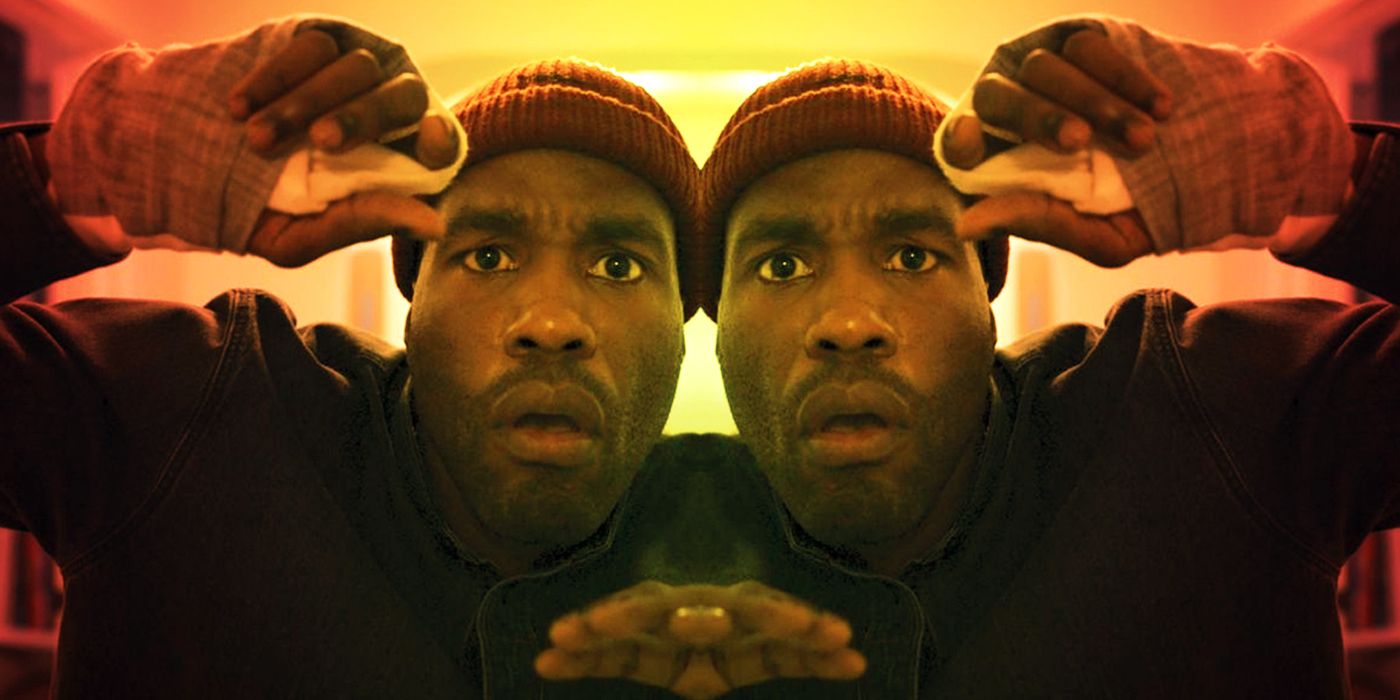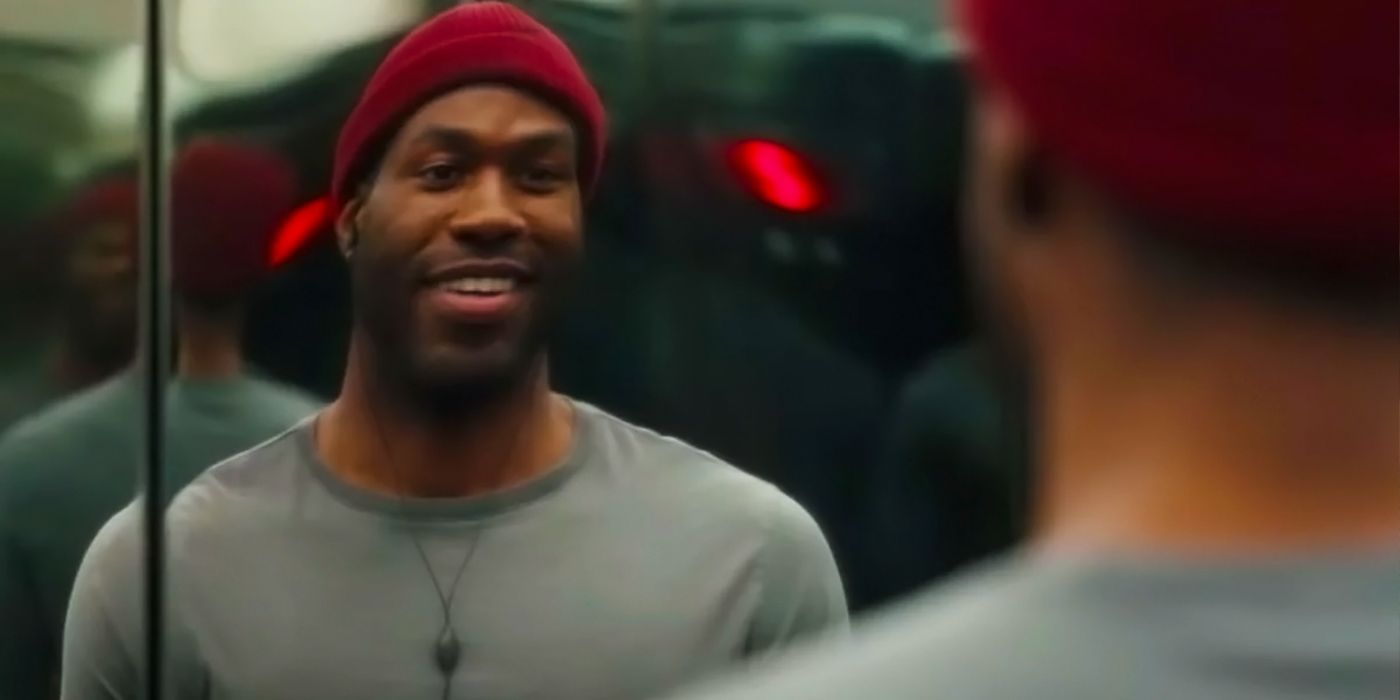
The opening title credits to Candyman are mirrored, and, no, this isn't because the theater projectionist has messed up. As the spiritual sequel to the original 1992 killer thriller (also called Candyman), Candyman (2021) is actually the fourth entry in the Candyman franchise, though it largely ignores the previous two poorly received sequels: Candyman: Farewell to the Flesh (1995) and Candyman: Day of the Dead (1999). The initial selling point for the 2021 Candyman semi-reboot was Jordan Peele's involvement as producer. Known for his genre-splicing style and symbolic approach to social commentary, Peele's films (namely, Get Out and Us) are exceptionally conducive to film analysis and YouTube explainers. No doubt, Peele fans are certainly hyped to dissect the visual cues and motifs likely layered throughout Candyman, as per Peele's expected influence on the film.
Centering on Anthony McCoy, a visual artist living in Chicago, Candyman makes many visually interesting "artsy" stylistic decisions with its overall aesthetic and cinematic direction, reflecting the creative nature of the story's central protagonist. Drawing creative inspiration from the Cabrini-Greens projects, a recently gentrified mixed-income residential area, McCoy visits the projects and learns of the story of "Candyman," a supernatural killer who, as urban legend has it, kills whoever repeats his name five times in front of a mirror. As artists do, McCoy, rather than shying away from this frightening story, develops an art exhibit around the legend, inadvertently resurrecting Candyman in public consciousness.
Perhaps a continuation of Peele's preoccupation with doubles, as made apparent in his meaningful use of doppelgängers in Us (2019), mirrors and mirrored reflections play a key role in Candyman. This explains why the opening title credits are reversed: Candyman does this to aesthetically establish the overarching themes of duality. In the film, Candyman is summoned by saying his name in front of a mirror. Likewise, at various points, McCoy is unsettled by his reflection in the mirror, which -- as mirrors do -- reveals to McCoy who he truly is. This feeling of being unsettled is also shared earlier by the audience with the reversed title cards.

Opening Candyman with reversed titles also establishes the meta point about how Candyman, like all art, is also a mirror. Reflections aren't real in any physical, material sense. They are fictional illusory reflections of reality that, though identical to reality, bear no substance of their own. Art, especially the visual arts such as film, operates the same way: it reveals the world to itself. With the opening title reversal, these are the movie's fourth wall breaking mechanics of Candyman's social commentary on race and class issues, with which the film directly confronts its audience. Candyman is a confrontational film, forcing its audience to contend with a twisted version of itself, much like the warped mirrors of a carnival funhouse.
Through this fourth-wall break, Peele and director Nia DaCosta manage to create a more directly engaging -- read: confrontational -- film out of Candyman. Following the heyday of slasher films in the '80s, slasher film directors have seemingly felt the pressure to do something more with their slasher films than simply satisfy their audience's animal cravings for gore, jump scares, and sadistic violence. With Wes Craven's Scream (1996) and Michael Haneke's Funny Games (1997, 2007), DaCosta's Candyman joins the ranks of provocative, self-aware slasher films, albeit with a more explicit call to arms for its audience.
from ScreenRant - Feed https://ift.tt/3BpYD3T

No comments:
Post a Comment